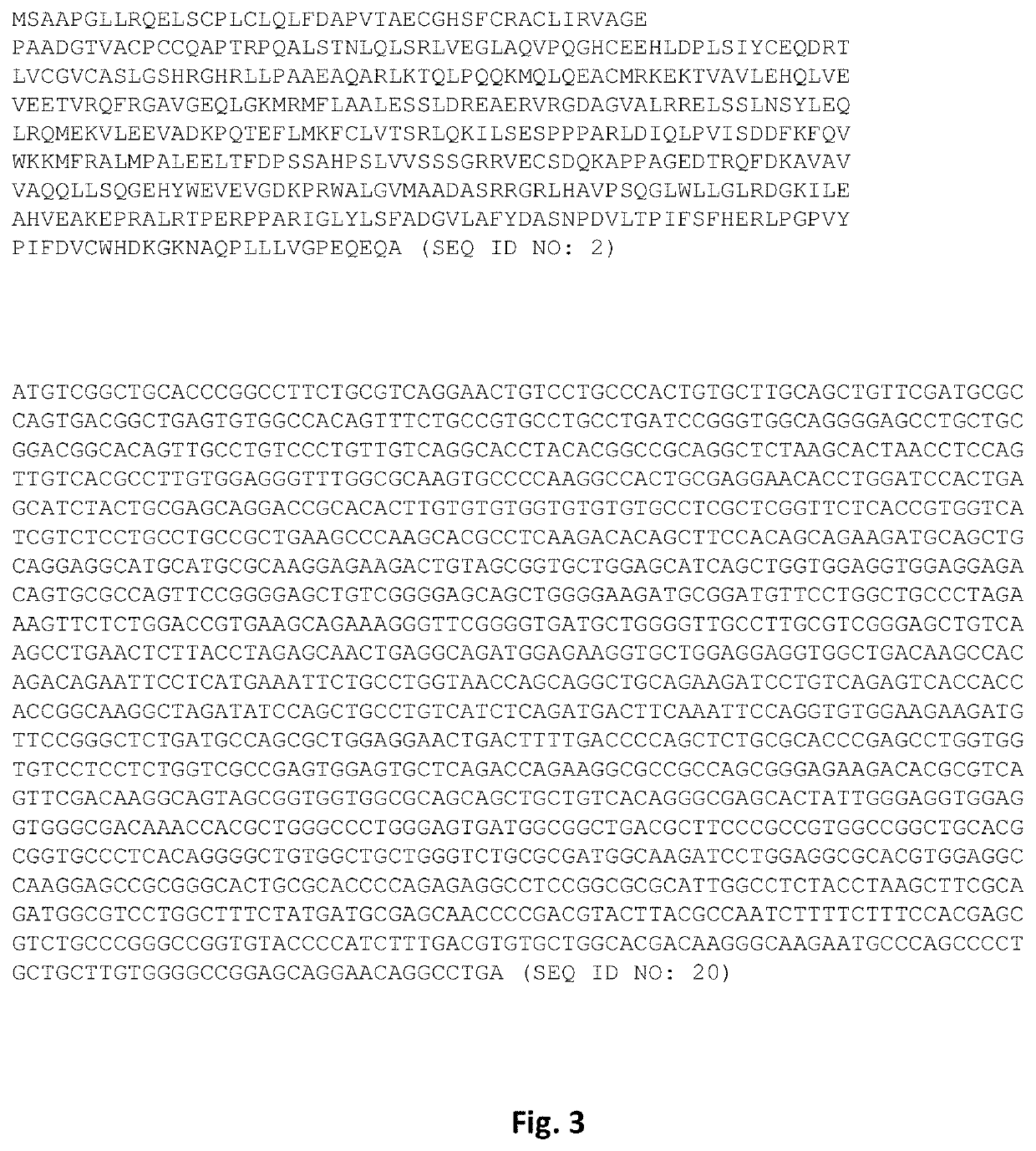MG53 mutants, methods of making the same, and uses thereof
a technology of mg53 and mutants, applied in the field of biomedical, can solve problems such as dilated side effects, and achieve the effects of avoiding or reducing metabolic side effects
- Summary
- Abstract
- Description
- Claims
- Application Information
AI Technical Summary
Benefits of technology
Problems solved by technology
Method used
Image
Examples
embodiments
[0169]The biological materials used in all examples such as E. Coli strains, various clones and expression plasmids, media, enzymes, buffer solutions, and various culturing methods, protein extraction and purification methods, and the other molecular biological operation methods, are all well-known to persons skilled in the art. For more details, please refer to the “Molecular Cloning: A Laboratory Manual” edited by Sambrook, et al. (Cold Spring Harbor, 1989) and “Short Protocols in Molecular Biology” (Frederick M. Ausubel, et al., translated by Yan Ziying et al., Science Press (Beijing), 1998).
example 1
on of MG53 Mutants
[0170]1. Preparation of Human MG53 Mutants
[0171]Human MG53 S255A Mutant
[0172](1) Primer design: determining the corresponding nucleotide site of the amino acid targeted for site-directed mutagenesis in the cDNA sequence, modifying the nucleotide sequence at the mutation site according to the mutated amino acid, and designing primers by intercepting a sequence of 20 bp upstream and 10 bp downstream the mutation site. The sequences of the primers are as follows:
[0173]
Forward primer of human MG53 S255A: (SEQ ID NO: 25)tgcagaagatcctggcagaggctcccccacccgReverse primer of human MG53 S255A:(SEQ ID NO: 26)tccagacgggcgggtgggggagcctctgccagg
[0174](2) Polymerase chain reaction (PCR) of plasmid full-length clone: performing PCR reaction by using the designed primers for site-directed mutagenesis, using Taq Polymerase High Fidelity, and taking the original gene expression plasmid as a template. The reaction system and conditions are as follows:
[0175]templatexµlprimer-F0.5µl...
example 2
Mouse MG53 S255A Mutant on the Cell Membrane Repair Function and Cardioprotective Function of Mouse Wild-Type MG53
[0305]In order to evaluate the impact of mouse MG53 S255A mutant (its amino acid sequence is set forth in SEQ ID NO: 8) on the cell membrane repair function and cardioprotective function of mouse wild-type MG53, the inventors overexpressed mouse wild-type MG53 and mouse MG53 mutant using adenovirus in neonatal rat ventricular myocytes (NRVMs) that were primarily cultured, and detected the survival rate of cells. The results are shown in FIG. 14, which indicates that hypoxia / reoxygenation-simulating ischemia-reperfusion injury result in the massive release of lactate dehydrogenase (LDH) and decreased intracellular ATP in NRVMs, the over-expression of mouse wild-type MG53 and mouse MG53 S255A mutant can similarly inhibit LDH release and ATP reduction. This suggests that mouse wild-type MG53 has a protective effect on ischemia-reperfusion induced apoptosis and necrosis, whi...
PUM
| Property | Measurement | Unit |
|---|---|---|
| polar | aaaaa | aaaaa |
| nucleic acid sequence | aaaaa | aaaaa |
| resistance | aaaaa | aaaaa |
Abstract
Description
Claims
Application Information
 Login to View More
Login to View More - R&D
- Intellectual Property
- Life Sciences
- Materials
- Tech Scout
- Unparalleled Data Quality
- Higher Quality Content
- 60% Fewer Hallucinations
Browse by: Latest US Patents, China's latest patents, Technical Efficacy Thesaurus, Application Domain, Technology Topic, Popular Technical Reports.
© 2025 PatSnap. All rights reserved.Legal|Privacy policy|Modern Slavery Act Transparency Statement|Sitemap|About US| Contact US: help@patsnap.com



